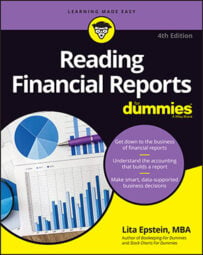The statement of cash flows is derived primarily from information found on a company's income statement and balance sheet in financial reports. You usually don't find massaged numbers on this statement because it's based primarily on the numbers that have already been shown on these other documents. But you may find that the presentation of the numbers hides cash flow problems.
Discontinued operations
Discontinued operations occur when a company shuts down some of its activities, such as closing a manufacturing plant or putting an end to a product line. Many companies that discontinue operations show the impact it has on their cash in a separate line item of the financial report.
Companies that have cash flow problems with continuing operations may not separate these results on their cash flow statements. Because the accounting rules don't require a separate line item, this strategy is a convenient way to hide the problem from investors — most of whom don't do a good job of reading the small print in the notes to the financial statements anyway.
If discontinued operations have an impact on a company's income statement, you see a line item there listing either additional revenue or additional expenses related to the shutdown. You can find greater detail about those discontinued operations in the notes to the financial statements.
Anytime you see mention of discontinued operations on the income statement or in the notes to the financial statements, be sure that you also see a separate line item in the statement of cash flows. If you don't, use the information you glean from the income statement and the notes to calculate the cash flow from operations.
To calculate the cash flow from operations (cash received from the day-to-day operations of the business, usually from sales), subtract any cash generated from discontinued operations (which you find noted on the income statement) from the net income reported on the statement of cash flows. When looking at a company's profitability from the cash perspective, you want to consider only cash generated by ongoing operations.
When you take on the role of detective, you may uncover a cash flow problem that the financial wizards carefully concealed because the rules allow such a misleading presentation.
Income taxes paid
Just like with discontinued operations, the amount of income taxes that a company pays can distort its operating cash flow. The reason is that, sometimes, companies pay income taxes as a one-time occurrence, such as taxes on the net gain or loss from the sale of a major asset. The income taxes a company pays for these one-time occurrences shouldn't be included in your calculations related to operating cash flow.
By reviewing the sections on investing or financing activities in the statement of cash flows, you can find any adjustments you may need to calculate the operating cash flow. Here are two key adjustments you need to make to find the actual net cash from operations (the amount of cash generated from the company's day-to-day operations):
Gains from sales of investments or fixed assets: If a company gains from the sale of investments or fixed assets (anything the company owns that it can't quickly convert to cash) that weren't part of operations, add back in the taxes paid on a gain from the sale of an investment or fixed asset. Taxes paid on one-time gains distort the true cash flow from operations.
Losses from sales of investments or fixed assets: If a company loses from the sale of investments or fixed assets, the tax savings the company gets from the loss increase its cash flow. You need to subtract these tax savings from the net cash so your operating cash flow accurately reflects the cash available from operations.

